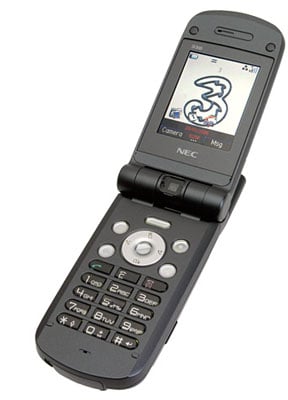This article is more than 1 year old
Cutting the cord: future mobile broadband tech
How internet on the go is going to get much faster
Each user's data, be it compressed voice or IP packets, is multiplied by what's called a 'spreading code' which is unique to that user. The receiving basestation gets the combined signals from every user on the frequency, but dividing that received data by the user's spreading code reproduces the original data for that specific user. Applying different spreading codes to the same received data can, in W-CDMA, reproduce the communication for almost 200 voice calls - depending on the codecs being used.

Did anyone really make video calls?
Voice still takes precedence, but W-CDMA can support data rates of up to 384Kb/s with minimal connection times. Slower rates are also possible, as well as maintaining several connections at the same time. When 3G data services were developed, it was commonly thought that users would want multiple data connections billed at different rates: a slow connection for e-mail notifications might be free to use, a slightly-faster one for instant messaging could be always connected as part of a premium tariff, while the full 384Kb/s would be available on demand for video calling and the like.
But it's not just video calling that punters proved reluctant to do - not enough were downloading music from the network operators, or subscribing to video streaming services, or really using any of the whiz-bang services by which the operators had justified the billions spent on the licences. Unable to understand the reluctance of users the engineers decided that if only the connections were a little faster then the mobile internet would finally happen, so set about squeezing a little more speed out of the W-CDMA standard.
It's all in the angles - OFDM
OFDM (Orthogonal Frequency Division Multiplexing) isn't a new technique, or one unique to the cellular industry: it's also used by the Wi-Fi as well as ADSL broadband and DAB radio, but it is worth understanding as it provides remarkable facility as long as one has a wide enough band in which to use it.
The main problem OFDM solves is one of timing. A transmitter sends a chunk of data, followed by another one: assuming the chunks arrive sequentially then everything is fine, but if the first chunk bounces off a wall and thus arrives slightly later then it can interfere with the second one as their arrivals coincide. Obviously, this problem can be addressed by leaving a timing gap between the chunks, but OFDM instead puts them in different frequencies so the second can be sent immediately after the first.
That requires a fast radio and generally contiguous spectrum - though OFDM can be used in non-contiguous blocks, it's just more difficult. Orthogonal in this context means 'discrete' or 'separate' rather than anything to do with angles or Greeks.
